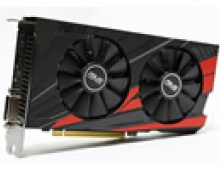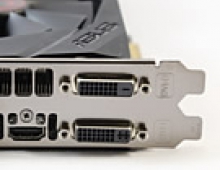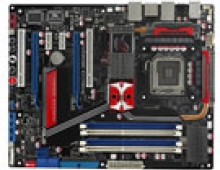Asus P5B Deluxe/WiFi-AP
13. Conclusion
![]() The P5B Deluxe/WiFi-AP Edition is a high-end board for the Core2Duo platform. While the board has been on the market for sometime, the latest BIOS updates give it the stability that was needed to make it an overall, very good motherboard.
The P5B Deluxe/WiFi-AP Edition is a high-end board for the Core2Duo platform. While the board has been on the market for sometime, the latest BIOS updates give it the stability that was needed to make it an overall, very good motherboard.

 Prospective buyers don't have to worry about the future, since this motherboard supports all currently sold Intel processors for 775 socket, Intel Core2 Extreme, Core2 Duo, Pentium 4 EE, Pentium D, Pentium 4 and Celeron D, and Intel's upcoming QuadCore. Moreover, the board is Vista Premium certified, meaning you will have all the needed drivers by the time Microsoft's Vista operating system hits the retail market.
Prospective buyers don't have to worry about the future, since this motherboard supports all currently sold Intel processors for 775 socket, Intel Core2 Extreme, Core2 Duo, Pentium 4 EE, Pentium D, Pentium 4 and Celeron D, and Intel's upcoming QuadCore. Moreover, the board is Vista Premium certified, meaning you will have all the needed drivers by the time Microsoft's Vista operating system hits the retail market.
 The board is based on Intel's P965 chipset that offers good performance and high overclocking abilities. In case you want high 3D gaming experience, the Asus P5B Deluxe supports ATI Crossfire Technology. There is the possibility to run Nvidia's SLI with this board, with "hacked" drivers, which is another plus for buyers.
The board is based on Intel's P965 chipset that offers good performance and high overclocking abilities. In case you want high 3D gaming experience, the Asus P5B Deluxe supports ATI Crossfire Technology. There is the possibility to run Nvidia's SLI with this board, with "hacked" drivers, which is another plus for buyers.
The eight SATAII connectors allow for high storage expandability, while there is support for two ATA 100 devices. Various expansion slots are available for USB2.0, 1394 and the retail package is more than complete with printed manuals and supported software (drivers)

While the board has a very good design and ergonomic, the nearby components may cause some headaches with the more "bulky" VGA cards, as we saw in the case of the MSI 7600GT Silent. Asus' update Bios software doesn't seem to work properly, since its auto update function didn't find a new BIOS revision that had been posted on the ASUS website. It also doesn't automatically find the latest driver updates for your system.
Looking at the results, the board showed very good memory performance, compared with the other tested boards and was equal to or only slightly slower than the Foxconn motherboard in the CPU tests. Our tests were performed with 0706beta Bios. There is a good chance that many issues have been fixed with the latest BIOS updates.
 Overclocking is what you will enjoy most! The Asus P5B Deluxe can be a true delight for those who want to perform maximum tweaking on their system. You can go up to 650FSB in 1MHz steps (theoretically), adjust memory timings and of course voltages for CPU/RAM. You can set the CPU multiplier for Core2Duo processors and disable Intel's speedstep. Many users around the world praise the P5B Deluxe for its overclocking abilities. We found it peaked at 430FSB, and other reviewers had better luck managing up to 460+FSB.
Overclocking is what you will enjoy most! The Asus P5B Deluxe can be a true delight for those who want to perform maximum tweaking on their system. You can go up to 650FSB in 1MHz steps (theoretically), adjust memory timings and of course voltages for CPU/RAM. You can set the CPU multiplier for Core2Duo processors and disable Intel's speedstep. Many users around the world praise the P5B Deluxe for its overclocking abilities. We found it peaked at 430FSB, and other reviewers had better luck managing up to 460+FSB.
 In case your overclocking fails, after shutting down and repowering, you can change the overclocking settings and try again, with Asus C.P.R. (CPU Parameter Recall) technology. No need to clear the CMOS any more.
In case your overclocking fails, after shutting down and repowering, you can change the overclocking settings and try again, with Asus C.P.R. (CPU Parameter Recall) technology. No need to clear the CMOS any more.
As you may have guessed, all these special features come at a price. Yes, the Asus P5B Deluxe WiFi-AP Edition is not a cheap motherboard. Users will find its price at around US$220~250, making it rather expensive. Building a gaming PC system requires a stable and powerful motherboard, and the Asus P5B Deluxe covers all possible needs you might have and offers futureproof specifications. Overall, a very good motherboard. You definitely want to consider this one when buying a new motherboard for the Core2Duo platform.

Problems: Despite the fact that the Asus P5B Deluxe is a highly recommended motherboard, there are some problems still unresolved with the latest BIOS update. Specifically, we had three issues that were also confirmed by reading through several forums and users comments:
- Built-in JSMicro SATAIItoIDE controller doesn't work properly for many users. We faced some issues trying to boot from DOS. Some bootable discs worked fine (Memtest86+), others didn't (miniPE XT).
- Onboard sound (SoundMax) seems to produce crackles and clicks in random cases. While we installed the latest driver pack, the issue still exists.
- Selecting any setting other than Auto for CPU voltage, causes some weird problems with the Intel XE6800 processor. While we were able to overclock the CPU, with various benchmarks the CPU internal multiplier dropped from 11x to 6x, resulting in reduced performance. When CPU voltage was left at "Auto" setting, this problem didn't occur.





















